




Medicare Advantage Plans Montana 2026
Curious about the potential Medicare Advantage Plans in Montana for 2026? This article will outline the available plan options, potential benefits, and how to enroll, helping you make an informed choice about your healthcare.
Key Takeaways
- Some Montana Medicare Advantage Plans may offer additional benefits like vision, dental, and hearing care that could go beyond what Original Medicare provides.
- The available Medicare Advantage Plans available in Montana include HMO, PPO, and Special Needs Plans (SNPs), each designed to cater to different healthcare needs and preferences.
- Enrollment periods, including Initial Enrollment, Annual Enrollment, and Open Enrollment, are crucial for beneficiaries to understand in order to manage their healthcare coverage effectively.
Compare Plans in One Step!
Enter Zip Code
Understanding Montana Medicare Advantage Plans

Medicare Advantage Plans, also known as Medicare Part C, could offer Montana residents an alternative to Original Medicare. These plans are provided by private insurance companies approved by Medicare and some might include additional benefits not covered by Original Medicare, such as vision, dental, and hearing services.
For Medicare beneficiaries in Montana, these plans could potentially provide comprehensive coverage tailored to individual healthcare needs. Grasping the details of these plans could help with making informed decisions for both health and financial well-being.
Types of Montana Medicare Advantage Plans Available
Montana offers a variety of Medicare Advantage plans to cater to different healthcare needs, including Health Maintenance Organization (HMO) plans, Preferred Provider Organization (PPO) plans, and Special Needs Plans (SNPs). Each of these plans has unique features and benefits, designed to provide comprehensive healthcare coverage for Medicare beneficiaries.
HMO Plans
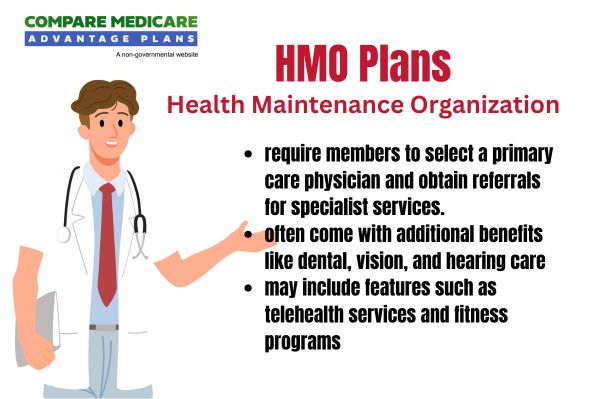
HMO plans in Montana require members to choose a primary care physician (PCP) who will coordinate their healthcare services. These plans might offer lower premiums and out-of-pocket costs compared to other Medicare Advantage options, but members must use healthcare providers within the HMO’s network for services to be covered, except in emergencies.
PPO Plans
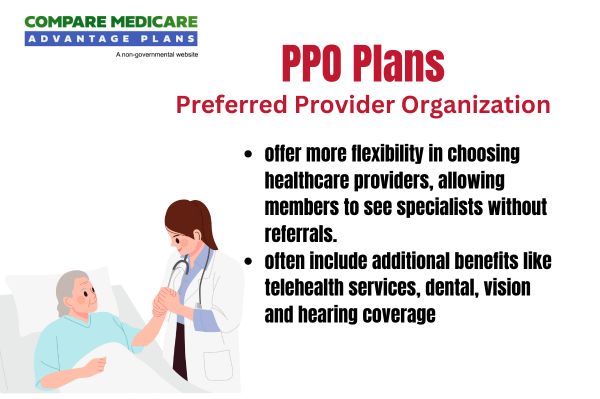
PPO plans offer more flexibility in choosing healthcare providers, allowing members to see specialists without referrals. These plans could provide the option to receive care from out-of-network providers, though at a higher cost compared to in-network services.
Though PPO plans might have higher premiums compared to HMO plans, their flexibility could make PPO plans an attractive option for those who want greater freedom in their healthcare choices.
Special Needs Plans (SNPs)
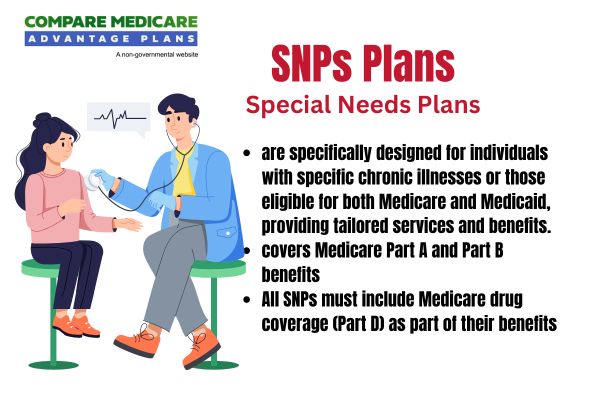
Special Needs Plans (SNPs) are tailored for individuals with specific health care needs, such as those with chronic conditions or those who are dual-eligible for Medicare and Medicaid. There are three primary types of SNPs: Dual-Eligible Special Needs Plans (D-SNPs), Chronic Condition Special Needs Plans (C-SNPs), and Institutional Special Needs Plans (I-SNPs).
Each type of SNP provides specialized services and support designed to meet the unique needs of their members, possibly ensuring that they receive appropriate and effective care.
Overview of Montana Medicare Advantage Plans
Medicare Advantage Plans in Montana could offer an appealing alternative to Original Medicare, potentially providing a range of benefits and services that could meet diverse healthcare needs. Some plans may be particularly beneficial for Medicare beneficiaries who seek additional coverage beyond what Original Medicare offers.
Potential Services and Benefits
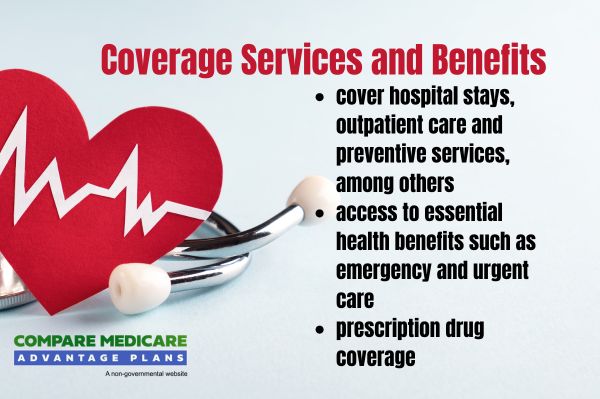
Medicare Advantage Plans are required to offer all benefits covered under Original Medicare (Part A and Part B), including services like outpatient care, emergency services, and hospitalization. However, some plans may also provide additional benefits such as vision, dental, and hearing services, which are not typically covered by Original Medicare.
Certain plans may also include coverage for prescription drugs (Part D), possibly providing comprehensive support for beneficiaries.
Enrollment Process for Montana Medicare Advantage Plans
To enroll in Medicare Advantage Plans, you need to be eligible for Medicare Parts A and B and reside in the appropriate service area. Specific enrollment periods allow individuals to sign up or make changes to their plans. Understanding these periods ensures continuous coverage.
When to Enroll
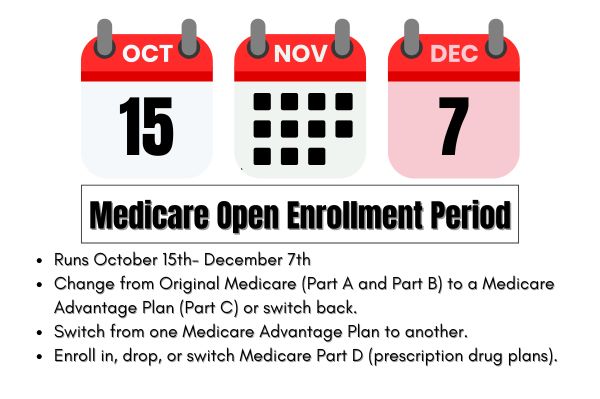
The Initial Enrollment Period for Medicare starts three months before an individual turns 65 and lasts until three months after their birthday month. This seven-month window is the first opportunity for eligible individuals to enroll in a Medicare Advantage Plan.
Enrolling promptly during this period allows beneficiaries to maximize their Medicare benefits from the first day of eligibility.
Different Enrollment Periods
Several key enrollment periods exist for Medicare Advantage Plans. The Annual Enrollment Period (AEP), from October 15 to December 7 each year, permits beneficiaries to join, switch, or drop plans.
The Open Enrollment Period (OEP), from January 1 to March 31 each year, allows changes to existing Medicare Advantage plans or a switch back to Original Medicare. Special Enrollment Periods (SEPs) are also available for life events such as moving or losing other health coverage, offering flexibility outside the standard enrollment windows.
OEP, AEP, Special Enrollment
During the Open Enrollment Period (OEP), which occurs from January 1 to March 31, existing Medicare Advantage members can switch plans or revert to Original Medicare without penalty.
The Annual Enrollment Period (AEP) from October 15 to December 7 is the primary time for enrolling in or changing Medicare Advantage plans for the upcoming year. Special Enrollment Periods permit changes outside these windows due to specific life events, offering beneficiaries the chance to adjust their coverage as needed.
Potential Costs Associated with Montana Medicare Advantage Plans
The potential costs associated with Medicare Advantage Plans in Montana may vary widely, which may include premiums, deductibles, and copayments. These costs will likely be influenced by factors such as federal reimbursement rates and the specific coverage options of each plan.
Understanding these costs could be crucial for beneficiaries to manage their healthcare expenses effectively.

Premiums and Co-Pays
Monthly premiums for Medicare Advantage Plans in Montana may vary depending on the plan and coverage. While some plans might offer lower copays for routine doctor visits, while specialist visits may incur higher costs. Insurance companies will likely set premium pricing based on federal reimbursement rates, possibly influencing the overall cost structure of these plans.
Out-of-Pocket Maximums
Annual out-of-pocket maximums in Montana Medicare Advantage Plans could potentially limit the total amount beneficiaries must pay for covered healthcare services in a year. These potential limits could provide a financial safety net for beneficiaries.
Possible Services and Benefits
Essential health benefits covered by Medicare Advantage Plans include outpatient care, emergency services, and hospitalizations. Depending on the specific plan, additional benefits like dental and vision care may be included, possibly enhancing the overall value of the coverage.
How to Qualify for Montana Medicare Advantage Plans
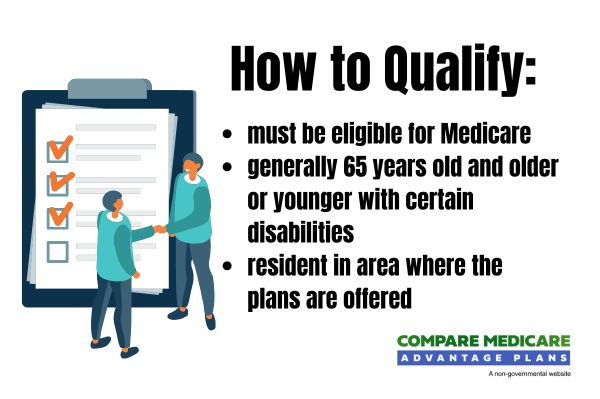
Qualifying for a Medicare Advantage Plan in Montana requires enrollment in both Parts A and B of Original Medicare. Eligibility for Medicare typically begins at age 65, though individuals with specific disabilities or medical conditions may qualify earlier. Enrollment can be done during the Initial Enrollment Period, which spans seven months around an individual’s 65th birthday.
Current Medicare beneficiaries can switch to a Medicare Advantage Plan during the Annual Enrollment Period, from October 15 to December 7 each year.
Contracted Network and Access to Care
Medicare Advantage Plans often negotiate with a network of healthcare providers to offer affordable services for enrollees. Access to care will likely vary based on the contracted network in a specific geographic area, potentially impacting patient satisfaction and health outcomes. Beneficiaries may face higher out-of-pocket costs when choosing to see providers outside of their plan’s network, making it important to understand the network’s scope.
Comparing Montana Medicare Advantage Plans to Original Medicare
Certain Medicare Advantage Plans in Montana could potentially offer several advantages over Original Medicare, which might include additional benefits like dental, vision, and hearing care that Original Medicare does not provide. However, there may be other differences in coverage and costs that beneficiaries should consider when choosing between the two options.
Coverage Differences
While both Medicare Advantage and Original Medicare cover necessary medical expenses, some Medicare Advantage Plans may include additional services like dental, vision, and hearing care. Additionally, certain Medicare Advantage Plans may also include prescription drug coverage, which is not included in Original Medicare.
Cost Comparisons
When comparing the potential costs, some Medicare Advantage Plans might offer lower out-of-pocket costs and a cap on total expenses, unlike Original Medicare, which has no out-of-pocket limit. However, the premiums for Medicare Advantage Plans may vary widely, and beneficiaries might face higher costs if they need to see out-of-network providers.
Comprehending these cost differences could be vital for selecting a plan that best fits your financial situation and healthcare needs.
Emergencies and Referrals

Medicare Advantage Plans cover emergency services without requiring prior authorization, ensuring immediate access during emergencies. For non-emergency situations, referrals may be necessary to see specialists, depending on the type of Medicare Advantage Plan.
In urgent care situations, Medicare Advantage Plans will likely offer flexibility for accessing timely care without the need for a referral. Beneficiaries are advised to understand their plan’s rules regarding specialists to help avoid unexpected costs and ensure proper coverage.
Summary
Montana’s Medicare Advantage Plans for 2026 will likely offer a comprehensive and flexible alternative to Original Medicare, possibly offering additional benefits and services tailored to individual healthcare needs. Understanding the different types of plans, the enrollment process, and the associated costs will likely be crucial for making an informed decision. With the right Medicare Advantage Plan, beneficiaries could enjoy enhanced coverage and peace of mind, knowing their healthcare needs are well taken care of. As you consider your options, remember that the best plan is one that fits your unique health requirements and financial situation.
Frequently Asked Questions
→ What are the main types of Montana Medicare Advantage Plans available?
The main types of Montana Medicare Advantage Plans are Health Maintenance Organization (HMO) plans, Preferred Provider Organization (PPO) plans, and Special Needs Plans (SNPs), each offering distinct structures and benefits to cater to various healthcare needs.
→ When can I enroll in a Medicare Advantage Plan?
You can enroll in a Medicare Advantage Plan during the Initial Enrollment Period, the Annual Enrollment Period from October 15 to December 7, the Open Enrollment Period from January 1 to March 31, or during a Special Enrollment Period for specific life events. Make sure to take advantage of these windows to secure your coverage.
→ What additional benefits could you expect from Medicare Advantage Plans in Montana?
Some Medicare Advantage Plans in Montana might feature extra benefits such as dental, vision, and hearing services, along with prescription drug coverage. These potential benefits could enhance your overall healthcare experience.
→ How do Medicare Advantage Plans handle emergencies and referrals?
Medicare Advantage Plans will likely cover emergency services without prior authorization, ensuring immediate care when needed. However, non-emergency specialist visits may require referrals based on the specific plan.

ZRN Health & Financial Services, LLC, a Texas limited liability company



